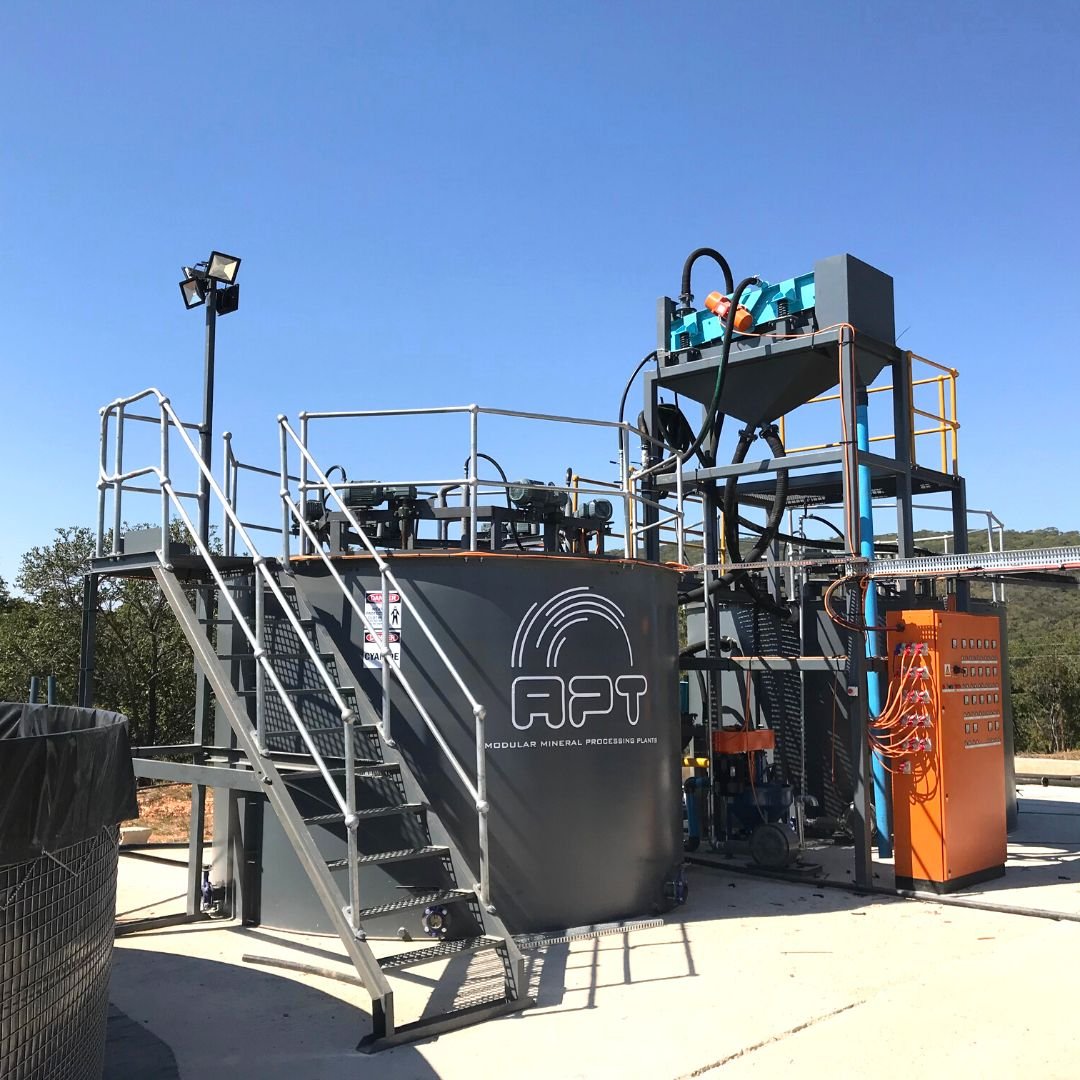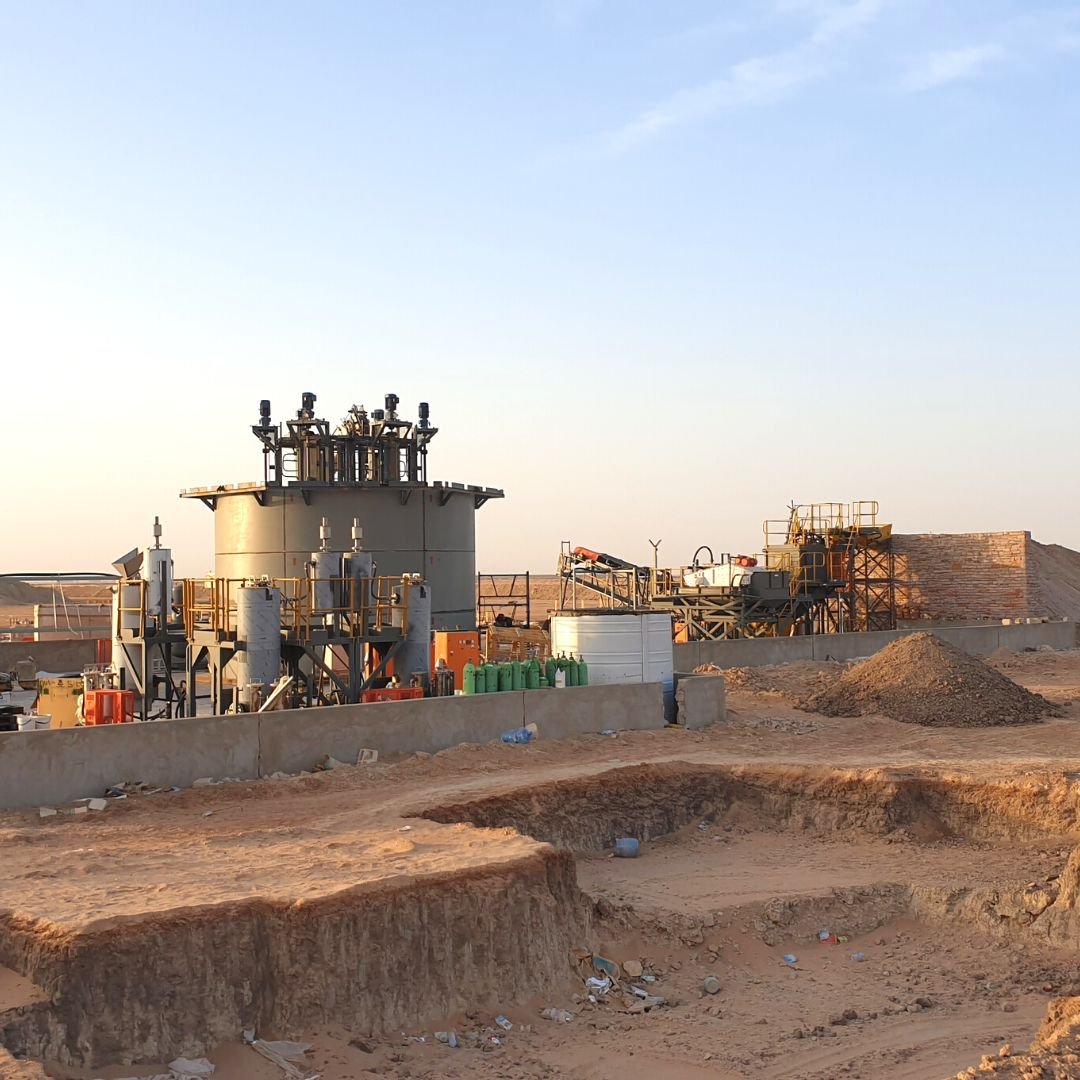TRITANK SMALL SCALE CYANIDATION PLANT
“I would have no hesitation in recommending the APT TriTank system to anyone considering slurry cyanidation, it is a paradigm ahead of the old tank system. ”
The APT TriTank is not a cyanidation tank, it is a cyanidation system. With six reaction compartments or sectors condensed into one conventional tank, not only is the footprint smaller, but a whole host of advantages accrue to the users benefit. Carbon is easier to move, a sector can be easily bypassed and most important of all. the mixing efficiency is enhanced.
The TriTank cyanidation system begins with the pre-preparation of the feed into slurry, usually in o special version of an APT RG Scrubber. Dry material is accepted into the feeder and the slurring begins to thoroughly disintegrate any agglomerates and lumps. The RG imparts an inter-particulate scrubbing action to freshen particle surfaces in the process. Organic oversize, like grass and roots, is screened out early on and the slurry is then conditioned in a holding section to remove any spikes in consistency. resulting in a smooth flow of uniform density.
Next, the slurry passes over a fine exclusion screen to remove any oversize that would otherwise contaminate the carbon. Finally, lime is added as a pH modifier to the undersize slurry before it is transported via a pipeline into the APT TriTank's first sector. Depending upon the reaction kinetics, residence time may necessitate the slurry passing through a number of sectors to complete dissolution. after which the pregnant slurry passes into the carbon containing sectors to effect adsorption. Alternatively, if Kinetics are very fast, or if preg-robbers are present, the first slurry sector may contain carbon, as per typical CIL.
One further possibility of the APT TriTank system is that the first few sectors may be used as pre-gerators and even run at elevated velocity to promote rapid oxidation. The APT TriTank's specialised mixing action allows the use of elevated slurry densities, which may bring benefits in terms of increased capacity and also reagent strength for the same amount of cyanide addition. Carbon is removed counter current to the slurry flow with the added advantage of convenience of operation with all the sectors being adjacent to each other.




